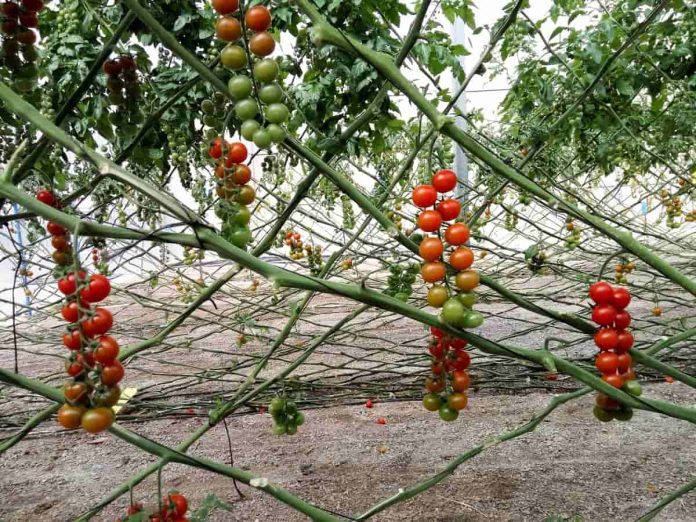The global demand for processed tomato products—such as tomato paste, puree, juice, ketchup, and sauces—continues to rise, driven by growth in the foodservice and retail sectors. For entrepreneurs, this creates a golden opportunity to tap into a value-added agribusiness with strong market potential. However, to turn fresh tomatoes into profitable shelf-ready products, you need a solid understanding of equipment planning, budgeting, and sourcing the right tomato processing machines.
This article serves as a step-by-step guide to launching a tomato processing business, including equipment requirements, cost breakdowns, and how to work with a trusted food processing equipment supplier to build a scalable and sustainable operation.
1. Why Tomato Processing Is a Smart Investment
Tomatoes are highly perishable, with a shelf life of just a few days post-harvest. Processing them into stable products extends their usability, reduces food waste, and opens up year-round market opportunities.
Key advantages of tomato processing:
Converts surplus harvests into long-lasting products
Serves multiple markets: households, restaurants, manufacturers
High demand for tomato paste, sauces, and juice
Offers scalability from small-batch to industrial output
Whether you’re a farmer looking to diversify income or an entrepreneur seeking a food production opportunity, starting a tomato processing business can yield strong returns—if properly planned.
2. Define Your Business Model and Product Line
Before investing in equipment, determine the product(s) you want to produce. Your machinery setup and budget will vary depending on whether you plan to make:
Tomato paste
Tomato puree
Tomato juice
Ketchup or sauces
Canned diced tomatoes
Also decide on your scale:
Small-scale/local market: 0.5–2 tons/hour
Medium-scale/wholesale: 3–10 tons/hour
Large-scale/export: 15+ tons/hour
Each level requires different degrees of automation and investment.
3. Key Tomato Processing Machines You’ll Need
A basic tomato processing line includes several stages: washing, sorting, pulping, concentrating, pasteurizing, filling, and packaging.
🛠️ Core Tomato Processing Machine List:
| Machine | Function |
| Washing & sorting unit | Removes dirt, stones, and rejects bad tomatoes |
| Tomato pulper/crusher | Extracts pulp and removes seeds & skin |
| Preheater | Softens pulp for better extraction |
| Evaporator (concentrator) | Reduces water content to form paste or concentrate |
| Pasteurizer | Heats product to eliminate microbes |
| Filling & sealing machine | Packs product into sachets, cans, or bottles |
| Labeling & coding machine | Prepares product for retail or export sale |
Some tomato processing machines can be multifunctional, handling several steps in a compact setup—ideal for startups with limited space or capital.
4. Budget Planning: Estimated Costs
The capital expenditure (CAPEX) of setting up your tomato processing plant will depend on your production capacity, automation level, and product type.
💰 Sample Budget for a Small-Scale Plant (1–2 TPH):
| Category | Estimated Cost (USD) |
| Machinery & equipment | $30,000 – $100,000 |
| Installation & utilities | $10,000 – $30,000 |
| Facility preparation | $15,000 – $40,000 |
| Packaging materials | $5,000 – $10,000 |
| Staff training & labor | $5,000 – $15,000 |
| Licensing & regulatory | $3,000 – $7,000 |
| Working capital | $10,000 – $25,000 |
| Total Investment | $80,000 – $225,000 |
Medium to large-scale plants may require investments ranging from $250,000 to over $1 million, depending on capacity and compliance needs.
5. How to Choose the Right Equipment Supplier
Working with the right food processing equipment supplier can save you significant time and money during setup and expansion.
What to Look for in a Supplier:
Experience in tomato processing projects
Customizable machinery based on your capacity
Installation and operator training services
After-sales support and spare parts availability
Knowledge of regional regulatory compliance (e.g., FDA, CE)
Ask for layout drawings, client references, and machine testing videos. Trusted suppliers will guide you through both technical and business aspects of the project.
6. Strategies to Reduce Startup Costs
If your budget is limited, here are ways to minimize initial expenses without compromising efficiency:
Start small and scale up: Choose modular machines that allow expansion.
Opt for semi-automatic equipment: Combine manual and machine work for cost-effectiveness.
Buy used or refurbished machines: If from a reputable supplier, this can reduce CAPEX by up to 40%.
Partner with cooperatives: Shared-use facilities can help small farmers add value to tomatoes.
Focus on one product first: Begin with tomato paste, then diversify into juice or ketchup later.
7. Projected Profitability and ROI
Let’s look at a basic ROI projection for a small plant producing 1,000 liters of tomato paste/day.
| Item | Value |
| Monthly output | 26,000 liters |
| Market price | $1.50/liter |
| Monthly revenue | $39,000 |
| Monthly expenses | $20,000 |
| Monthly profit | $19,000 |
| Break-even period | 6–12 months (approx.) |
Profit margins vary depending on tomato costs, packaging type, and market price, but a well-managed plant can yield 20–35% profit margins.
8. Licensing, Quality Control, and Compliance
Don’t overlook the importance of regulatory compliance:
Obtain necessary food production and packaging licenses
Follow hygiene standards (HACCP or ISO 22000)
Test product shelf life and microbial safety
Label products accurately for domestic and export markets
Many food processing equipment suppliers also offer compliance-friendly packaging solutions and documentation support.
Conclusion
Launching a tomato processing business can be highly profitable—but success begins with proper planning, realistic budgeting, and sourcing the right tomato processing machines. Whether you’re starting with small-batch tomato paste or building a diversified product line, your equipment choices will shape your product quality, production efficiency, and profitability.
By partnering with a reputable food processing equipment supplier, you gain access to expert guidance, technical support, and scalable solutions that grow with your business. With the right setup and strategy, you can turn fresh tomatoes into a value-added business that thrives in today’s fast-evolving food market.






